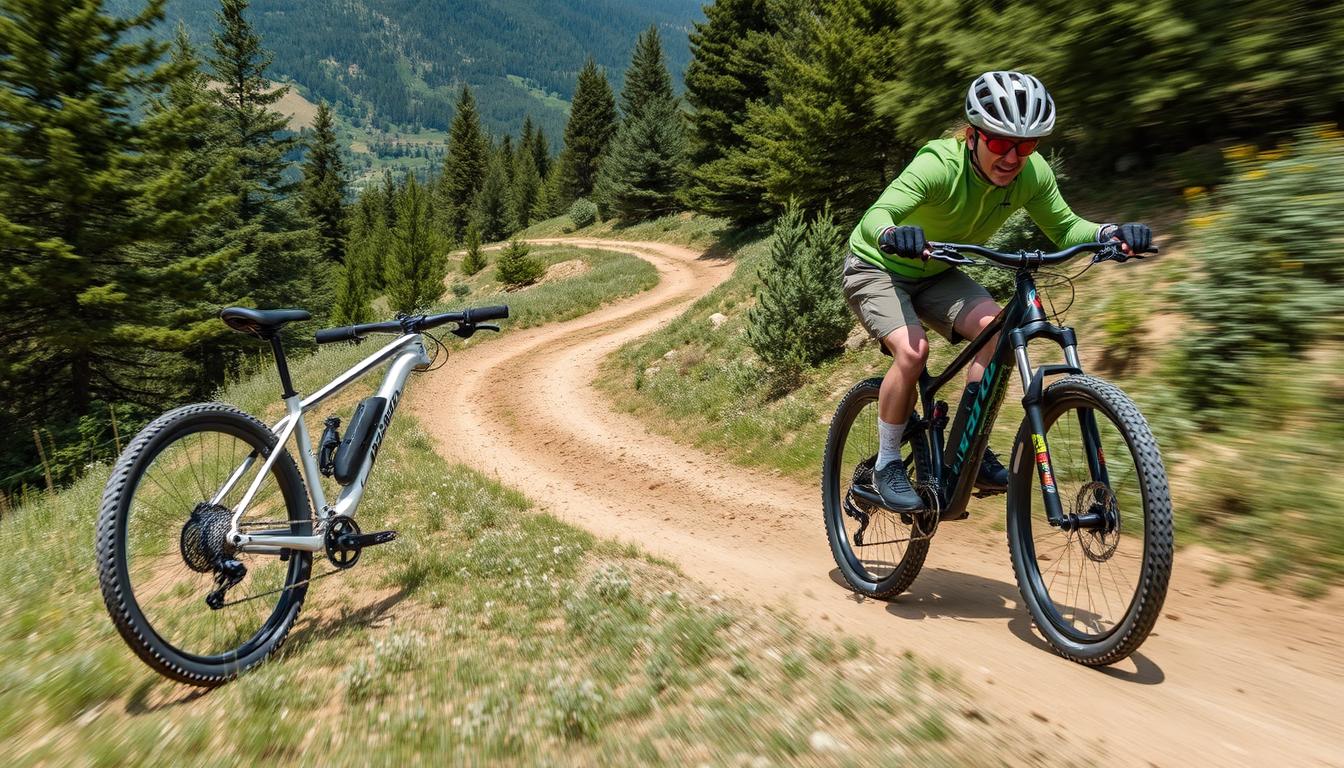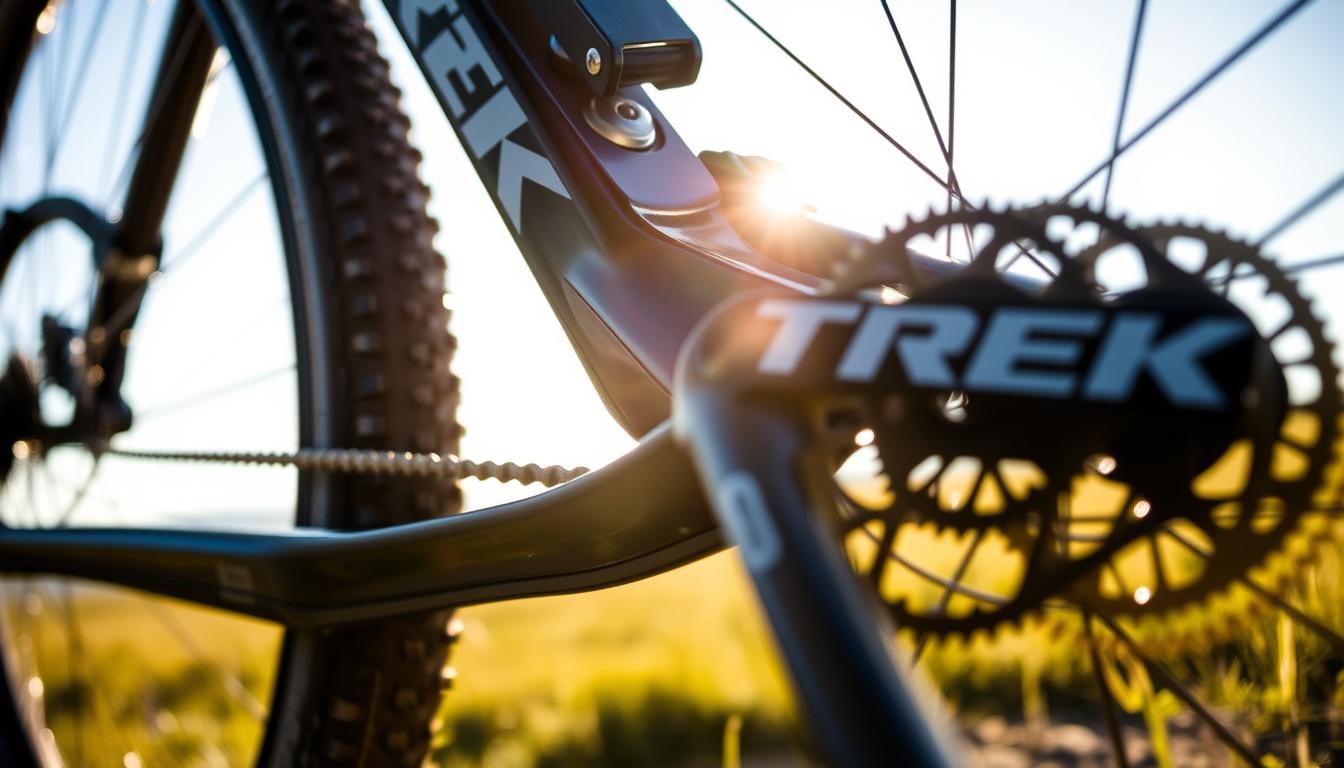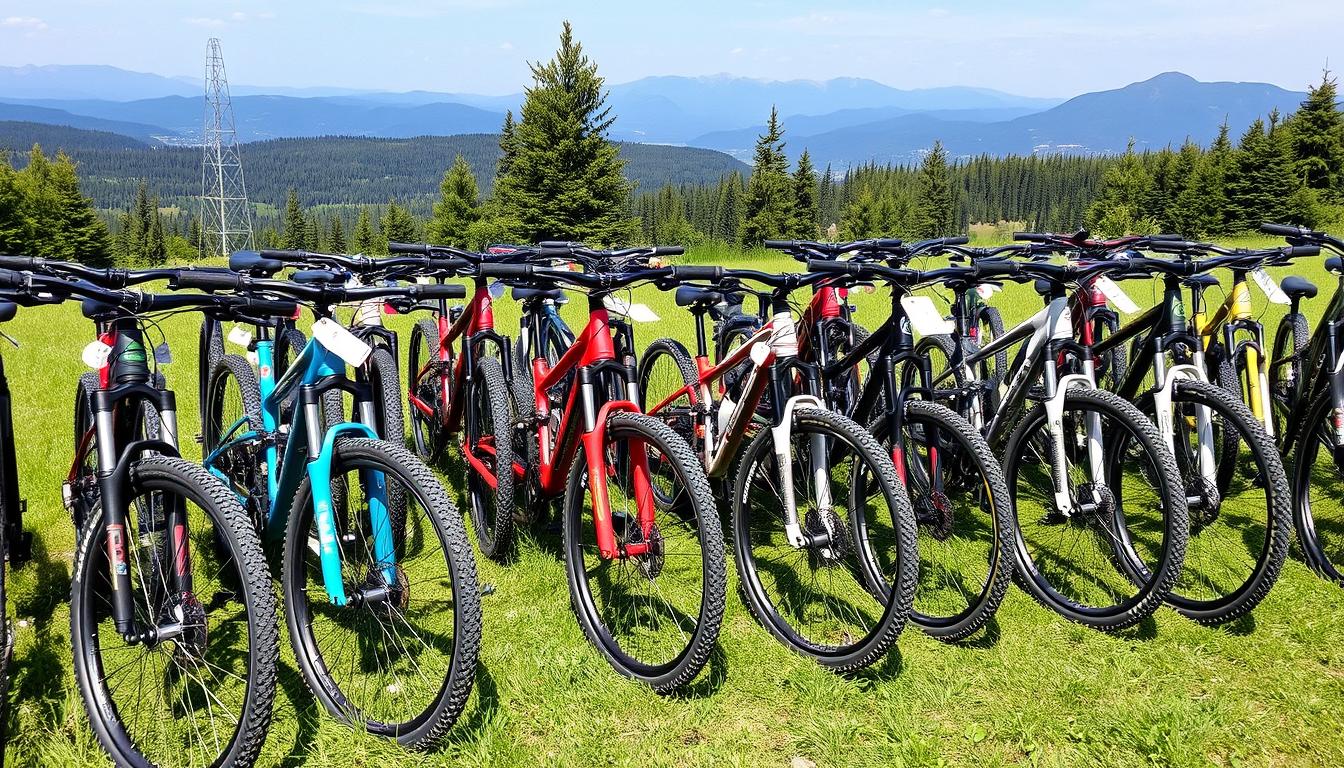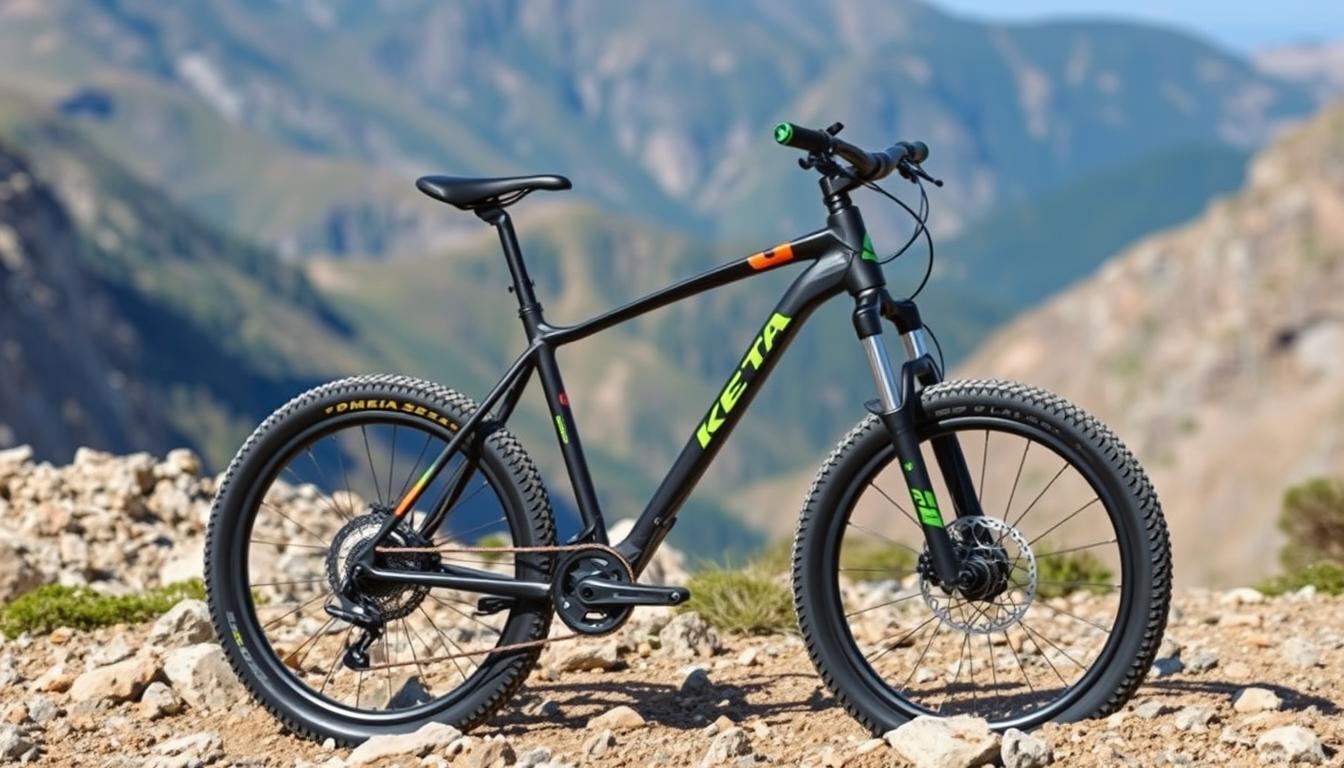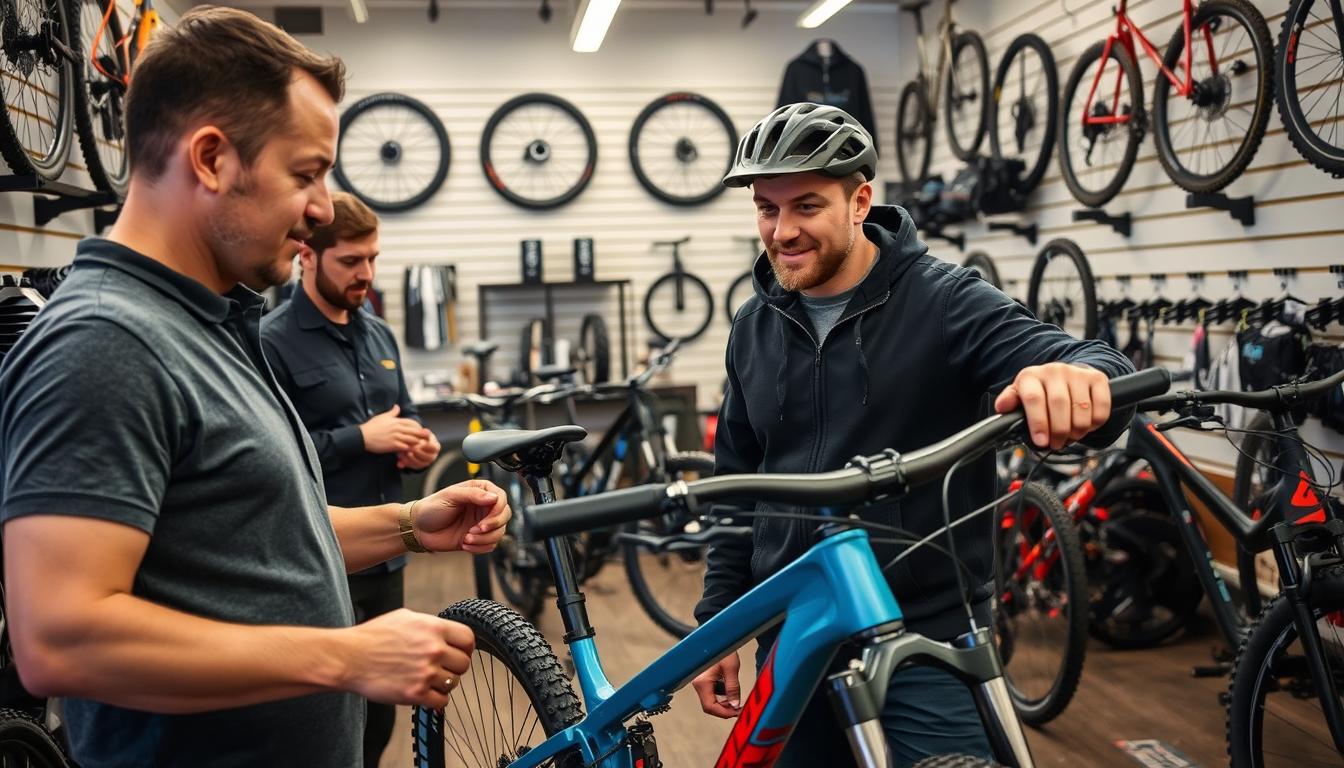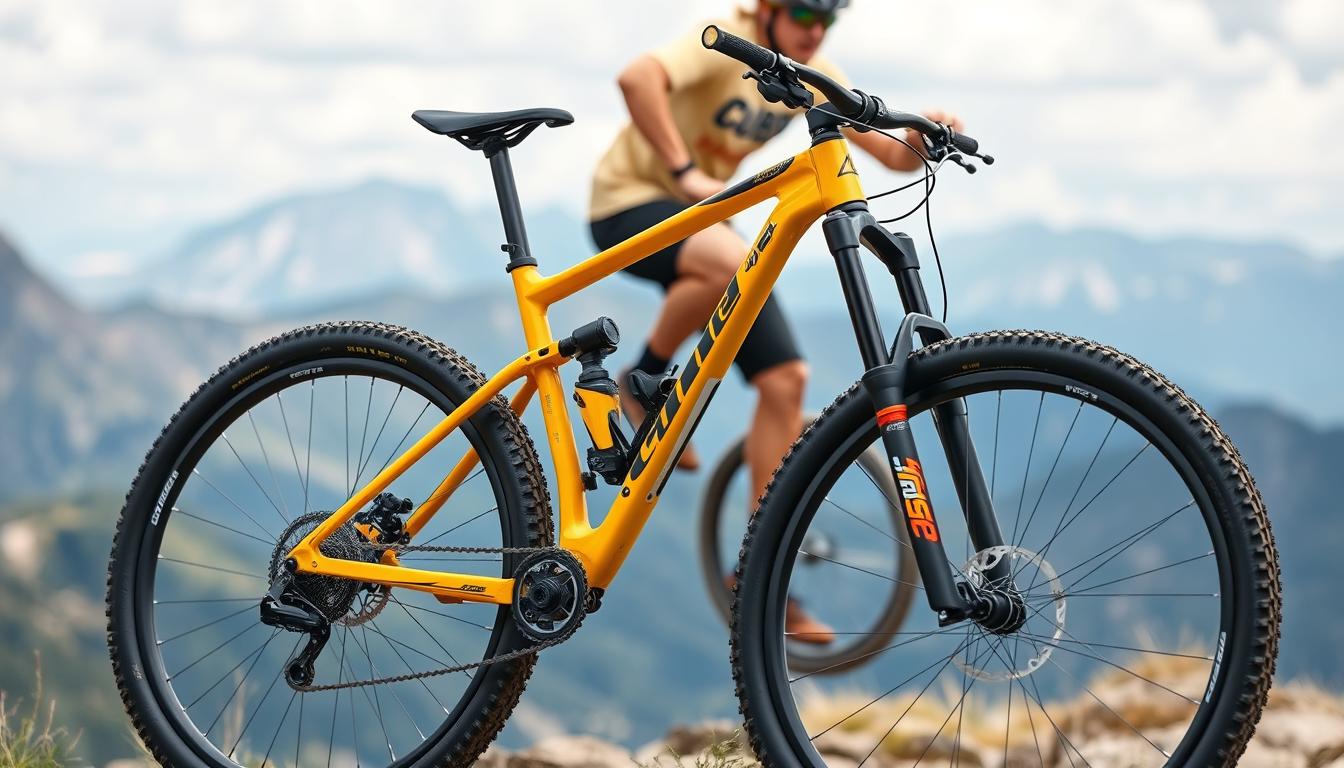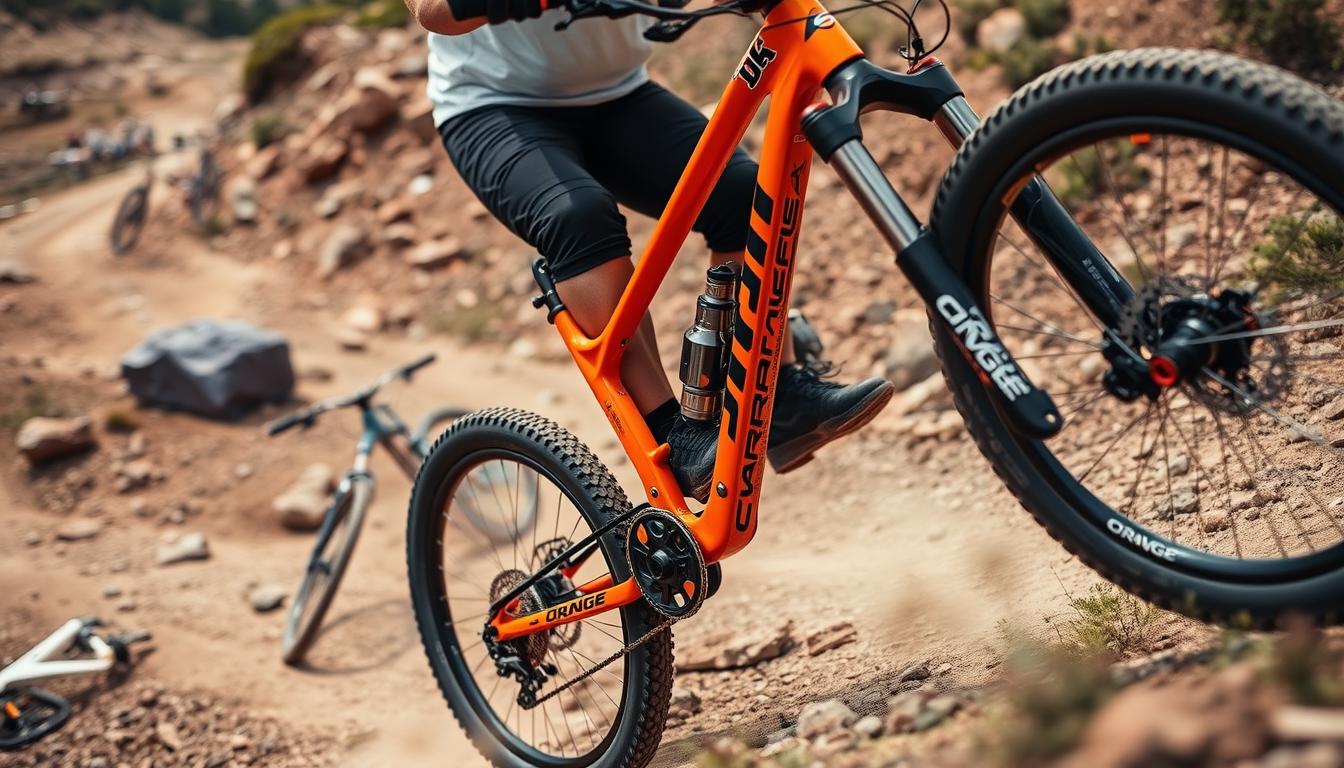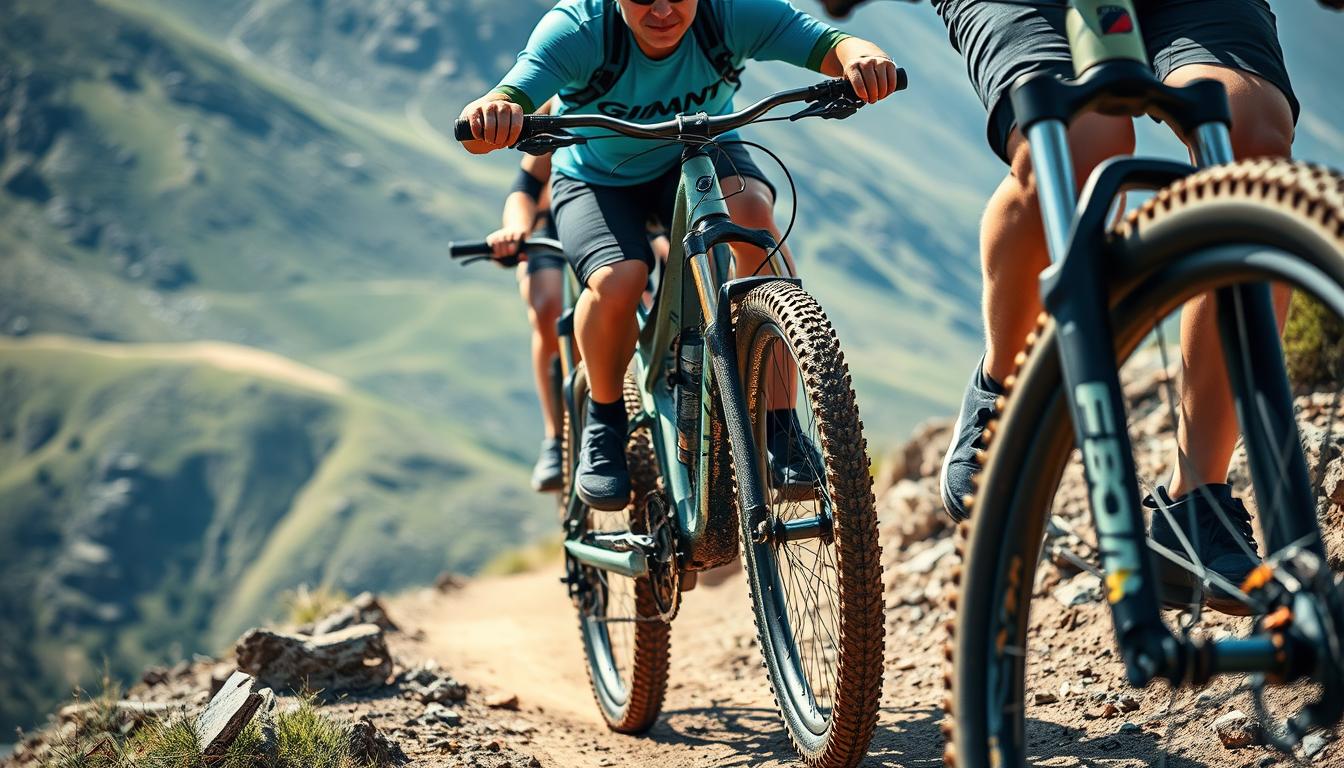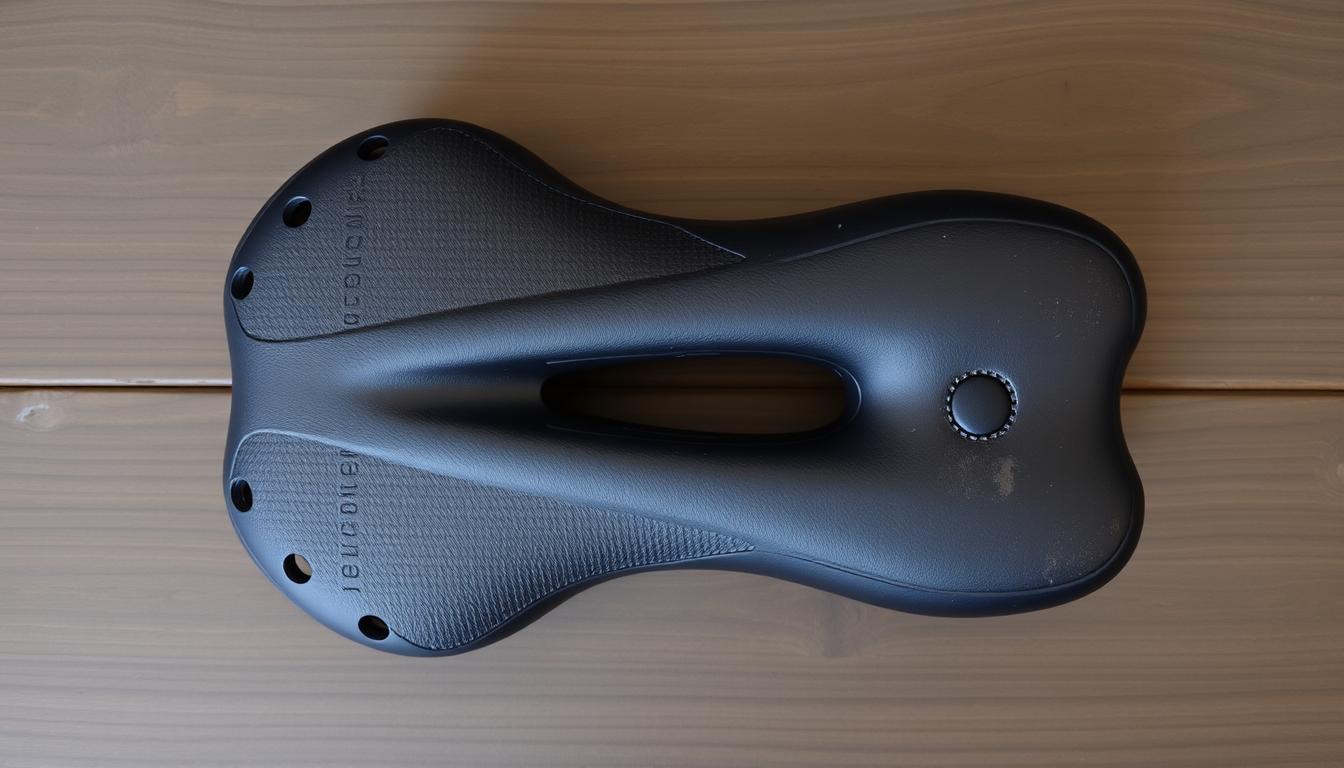The cycling world has changed a lot with e-bike mountain bikes, or e-MTBs, coming into the picture. They attract both experienced riders and beginners. With e-MTBs getting more popular, lots of people are thinking about how they stack up against traditional mountain bikes. This is important for understanding the different experiences each bike offers.
E-MTBs make riding easier, especially on tough trails, because of their motor help. They let you go faster and make climbing hills less tiring. But traditional mountain bikes are still loved for being light and easy to look after. They are great for people who love the classics or have a tight budget. We will look at things like power help, how far you can ride, how they perform, and what it’s like to use each kind of bike. For more details, why not check out this informative article.
Introduction to E-Bikes and Traditional Mountain Bikes
The introduction to e-bikes has opened up a world of possibilities for cycling enthusiasts. E-bikes, or electric mountain bikes (e-MTBs), are quite different from traditional mountain bikes. E-MTBs have electric motors to help the rider. This makes them suitable for more people, especially those who might find cycling tough.
Benefits of e-bikes include giving steady power to riders. This is great for beginners. There are e-MTB classes for different speeds, such as Class 1 and Class 3. E-MTBs are also heavier which makes them stable on uneven ground.
Traditional mountain bikes offer a range of styles like Cross-Country and Downhill. They’re great for physical fitness, requiring lots of pedaling. These bikes are lighter, which makes them more agile in tight spaces.
E-MTBs make mountain biking accessible for those with physical limits. They are also better for the environment. Still, traditional bikes offer a pure biking experience. To learn more about both types of bikes, check this informative resource. Consider both options to find the best bike for your needs.
Power and Assistance
Mountain biking experiences differ a lot with the type of bike you choose. E-MTBs, with their tech, bring big benefits in power and help. They stand out from ordinary mountain bikes by performing better in tough spots.
Overview of Motor Support in E-Bikes
E-MTBs boast top-notch e-bike motor support. This lets riders easily climb steep hills and navigate rough paths. The electric help boosts how well the bike does, making the ride less tiring. Thanks to the motor’s push, going uphill becomes easier.
This tech makes for longer trips over diverse lands, fitting all types of bikers.
Physical Effort Required for Traditional Bikes
On the other hand, classic bikes need more physical effort in mountain biking. Riders must use their own power, especially going up hills. This can be a good workout, as it works out more muscles.
Some enthusiasts love the achievement of tackling hard paths with just their strength. However, this can put off those not keen on such strenuous challenges.
Riding Range and Battery Life
The distance e-bikes can cover is crucial for adventure seekers. Knowing about e-bike battery capacity and its influencing factors is essential. This knowledge helps riders plan their journeys well.
Factors Affecting Battery Capacity
Several factors are key in deciding an e-bike’s range on a single charge. These factors include:
- Rider Weight: Heavier riders use more battery power.
- Terrain: Steep inclines reduce battery life faster than flat areas.
- Power Mode: Using higher assistance levels uses more battery.
- Environmental Conditions: Wind and temperature affect the battery’s performance.
By understanding these factors, riders can greatly extend their e-bike’s range. Regular maintenance and considering external conditions can maximise e-bike potential.
Distance Coverage with E-Bikes
Modern e-bikes let cyclists go on longer trips. Usually, e-bikes range from 15 to 60 miles per charge. Top models can go beyond 75 miles. For example, a 750W e-bike can reach up to 25 miles, while the QuietKat Ridgerunner can do about 25 miles too. Powerful 1000W e-bikes can even hit 70 miles under good conditions.
This increase in travel distance changes the game for biking adventures. E-bikes allow cyclists to explore more trails with less effort. They offer easier access to beautiful scenery and fun rides, overcoming limits set by physical fitness.
Performance: E-Bike Mountain Bike vs Traditional Bike
e-MTBs and traditional mountain bikes differ greatly in speed and ride quality. Knowing these differences helps riders pick what suits them best.
Acceleration and Speed Differences
e-MTBs offer a clear edge in acceleration. Their electric motor lets riders reach higher speeds with less effort, making climbing hills easier. This means thrilling downhill rides are more enjoyable. The motor’s extra power saves energy for longer journeys, boosting performance.
Ride Quality Comparisons
e-MTBs generally offer smoother rides than traditional bikes because of the electric assist. This helps ease climbs and maintain speed over rough terrain, making rides more comfortable. Traditional bikes, however, provide a raw experience that challenges the rider, perfect for those seeking to improve their skills. So, the choice between them often comes down to comfort versus challenge.
For riders interested in e-MTBs, looking into battery capacity and motor types is key. This helps ensure a satisfying experience that matches your trail goals.
Conclusion
In the debate of an e-MTB vs a traditional mountain bike, personal choice is key. E-bikes offer speed and ease, attracting a wide range of cyclists. This includes those who find traditional biking tough due to fitness or health issues.
Pedal support in e-MTBs means riders can tackle different terrains with less effort. This makes biking more fun and accessible to more people.
However, traditional bikes appeal for their simple mechanics and the physical effort they demand. They are the go-to for enthusiasts who prefer cycling without aid. Finding what works best for you in cycling is crucial, whether for leisure or adventure.
Choosing either an e-MTB or a conventional bike promotes a commitment to a healthy, eco-friendly lifestyle. As the cycling community grows, the excitement of exploring and the happiness from biking bring all enthusiasts together.
FAQ
What are the key differences between an e-MTB and a traditional mountain bike?
E-MTBs have electric motors that help you ride easier. Traditional mountain bikes need you to pedal harder, offering a tougher workout.
Can e-MTBs accommodate all types of riders?
Indeed, e-MTBs suit a wide range of people. They’re perfect for those not very fit, beginners, or anyone wanting easier mountain biking.
How does the ride quality differ between an e-MTB and a traditional mountain bike?
E-MTBs usually give you a smoother ride, especially uphill. They handle rough ground better. But, traditional bikes let you feel the trail more, giving a real mountain biking feel.
What should I consider regarding e-MTB battery life?
Think about the terrain, how much you weigh, the motor’s power setting, and how often you ride. These affect how long your battery will last. Understanding this helps pick the right e-MTB for you.
Are e-MTBs more efficient for tackling steep climbs compared to traditional mountain bikes?
Definitely! E-MTBs have torque for faster starts and easier climbs. They help you go up steep hills with less effort, making rides more fun.
Do traditional mountain bikes offer any advantages over e-MTBs?
Sure, traditional bikes are preferred by those who like a challenge and the achievement of pedalling without help. They also give a deeper connection with biking.
How far can I ride on an e-MTB compared to a traditional bike?
With an e-MTB, you can go further because the motor helps with tough terrain. Traditional bikes might need more breaks because they’re more demanding.
Can e-MTBs be used on all types of trails?
Yes, e-MTBs are adaptable to different terrains. They’re great for steep, rocky, or technical trails, offering a broad biking experience.
